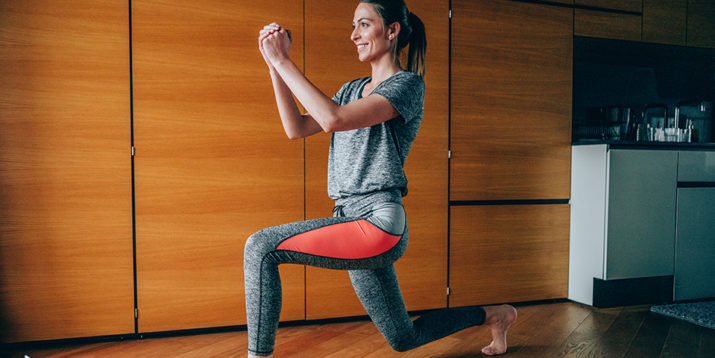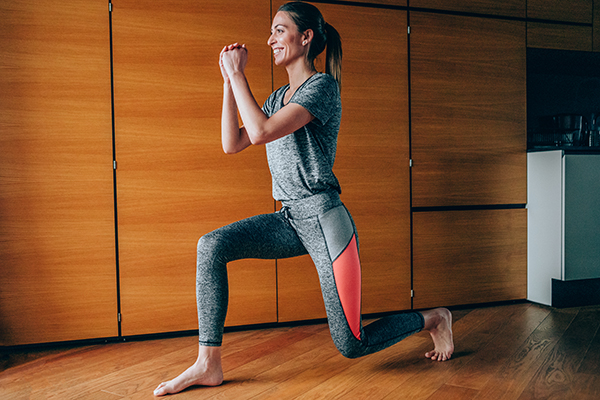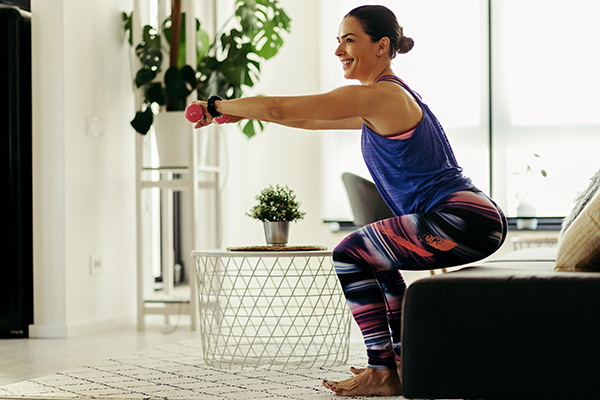Why You Should Try Doing Calisthenics

Calisthenics is a great way to build muscle, improve your coordination, and switch up your usual workouts.
So, what is calisthenics?
Calisthenics is essentially resistance training using your body weight — push-ups, lunges, squats, jumping jacks are all examples of calisthenic exercises.
Keep reading to learn more about calisthenic workouts and their benefits.
What Is a Calisthenic Workout?
“Calisthenics is a form of strengthening the body using a series of movements, or flows, that rely on gravity and your bodyweight for the challenge,” says Holly Perkins, BS, CSCS, and author of “Lift to Get Lean.”
Calisthenics — which comes from the Greek words meaning “beauty” and “strength” — combines strength-training exercises and gymnastics movements.
Unlike weightlifting and certain types of strength training, though, calisthenics requires minimal to no equipment.
“Nearly all calisthenics movements are considered closed kinetic chain movement patterns,” Perkins says. “This means you are moving your body around an immovable object, like the ground or an anchored bar.”
Because calisthenics exercises are versatile and non-load bearing, a lot of people do them to warm up for sports, HIIT classes, or cardio — but they also make a great workout on their own.

What Are the Benefits of Calisthenics?
The purpose of calisthenics is to build muscle and improve strength, coordination, flexibility, and mobility.
“Calisthenics exercises are functional,” says Alex Robles, M.D. and certified personal trainer. “This means major calisthenic exercises resemble normal human movement patterns. As a result, they help you build real-world strength.”
Regularly doing calisthenics means you’ll be more equipped for day-to-day activities like carrying heavy groceries, moving furniture, and walking up and down stairs.
The benefits of calisthenics go beyond improved strength and increased muscle tone, though. Calisthenics is also one of the most convenient workouts.
Here are a few reasons why:
- There’s no barrier to entry. Regardless of your age, fitness level, or prior strength training experience, you can start doing calisthenics today.
- It’s free. There’s no need to purchase a set of weights or even a mat — you just need your body weight.
- You can do calisthenics anywhere: in a gym, at a park, in a hotel room, on the sidewalk, or in your home.

Calisthenics Workout Plan for a Beginner
If you’re new to calisthenics or other forms of strength training, start small by incorporating a few exercises at the beginning or end of another workout, like a run or yoga session.
A good beginner calisthenics workout, Perkins says, is a series of walking lunges, plank variations, and push-ups.
You can aim for three sets of 10 reps for each exercise, or shoot for a specific time goal instead.
“For example, a great approach for walking lunges is to perform them with just your body weight, and start with two minutes of nonstop lunges. The next week you can increase to four minutes and work your way up in time,” Perkins says.
If you’re challenging multiple muscle groups at a time, start with two to three calisthenics workouts a week, Perkins suggests.
Once your body adapts after a few weeks, you can bump up the frequency to three or four times a week, she adds.
And remember: Correct form is key — not just for avoiding injury, but also for maximizing each exercise’s effectiveness.
“When done properly,” Perkins says, “calisthenics are much harder than they appear.”
To ensure you’re using proper form, watch an instructor perform each exercise first, then check your own form in a mirror.
Progressing to More Advanced Calisthenic Moves
“To get the most out of calisthenics, you will need to use progressively harder variations of bodyweight exercises as you get stronger,” Robles says.
For example, once you master a forearm plank for 30 to 60 seconds, you can try rocking back and forth on your toes to further engage your core or dipping your hips to the side to work your obliques.
As you become stronger and more confident in your body’s capabilities, work on challenging the muscle groups that feel the least developed.
That might mean doing more complex variations or trying new movements altogether.
Robles says the ideal full-body calisthenics workout will incorporate the body’s six major functional movement patterns: a horizontal push, horizontal pull, vertical push, vertical pull, knee flexion, and hip extension.
“Create a routine where you train each of the six movement patterns at least once per week,” he recommends.
Here are some of the exercises Robles recommends for each movement pattern:
- Horizontal push: push-ups
- Horizontal pull: inverted rows
- Vertical push: pike push-up variations
- Vertical pull: pull-up and chin-up variations
- Knee flexion: squat and lunge variations
- Hip extension: glute bridges
Should You Try Calisthenics?
The short answer: Yes! Calisthenics is a fun, convenient way to challenge yourself, improve your functional strength, and work on your coordination.
Plus, the moves are easy to incorporate into any exercise routine.
If you’re a cardio fanatic, for example, you could try capping your sweat sessions with a few calisthenics exercises to work your muscles to the point of fatigue.
Or try bodyweight programs like CORE DE FORCE and INSANITY on Beachbody On Demand.
If you love to lift weights, use calisthenics as a warm-up for carrying heavier loads.
Or, if you’re just getting back into exercise after a hiatus, try doing a few simple calisthenics moves as you walk around the neighborhood and get your heart pumping.

In the fitness world, calisthenics can easily get overshadowed by more popular workouts like weightlifting and HIIT — but it shouldn’t.